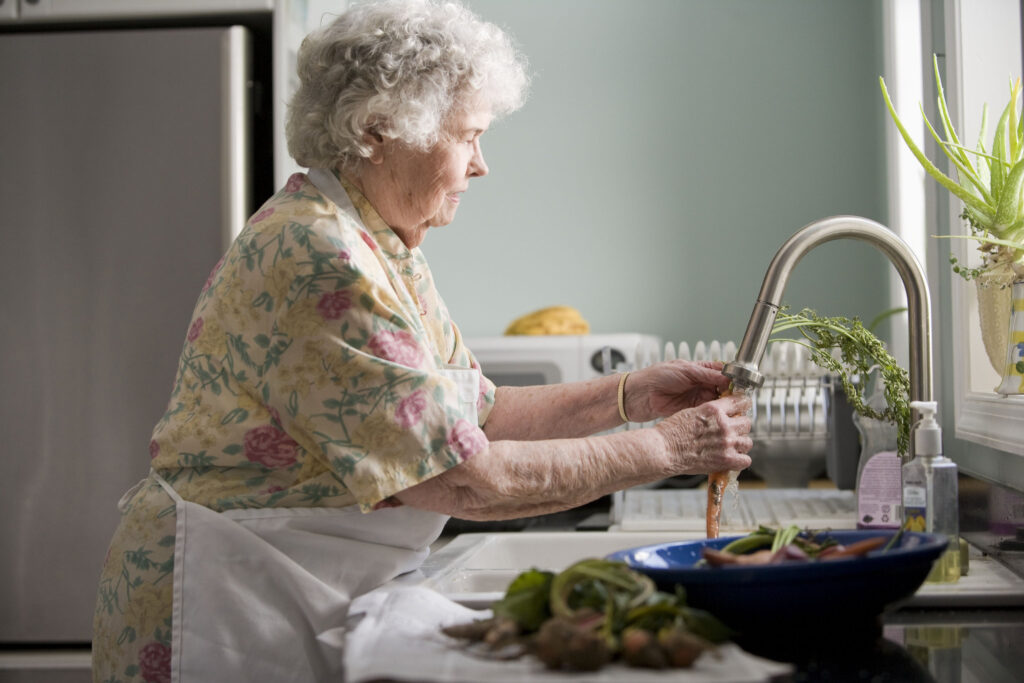MedicalAlertBuyersGuide.org is an independent review site. We may earn compensation from the providers below. Learn More
Best Living Arrangements for Family and Aging Seniors
Multi-generational living is becoming more and more popular with families as they continue to navigate how best to accommodate aging seniors. According to Pew Research Center, a record 64 million people now live with multiple generations under one roof – that’s 20% of the U.S. population. So what options are there for families who are interested in reconfiguring their living arrangements and lifestyles as family members age?
The baby boomers typically own their homes free and clear or with a sizable equity position by the time they hit retirement age, and most of them definitely want to age in place if possible. This movement toward combining households is seen across both the housing market and the healthcare industry. Multi-generational households are on the rise, and there are many pros and cons to this kind of living arrangement. The first step in achieving domestic bliss regardless of who is in your household is to make sure you understand the pros and cons of such an arrangement.

Obviously, there are financial advantages to sharing the load of monthly household expenses, but there are also some unique advantages to a multi-generational household. Childcare may be easier to arrange if your parents or in-laws are living with you. Work schedules are easier to accommodate if someone else is at home to prepare meals or pick up kids from school. It is definitely easier to make and keep healthcare appointments if everyone is under one roof.
One disadvantage is that you may have to clearly establish and respect each other’s boundaries, both physical and mental. One example is the need for very clear talking if an elderly mother is no longer physically or mentally able to care for a newborn or small child. Another issue that may arise is to make sure that spouses are spending time together as a couple without the extended family around. These are all issues that need to be tackled before anyone starts packing up boxes.
And don’t forget that care-giving will work both ways, especially with aging parents or in-laws. You may expect your elders to be built-in babysitters, but at some point you may have to become the caregiver to an elderly family member. This is another issue that will need to be explored before combining households. Fortunately, just as there are babysitting resources available, there are resources available to help with senior care-giving as well. Resources such as www.helpguide.org and www.seniorlink.com provide a plethora of information about being a family caregiver, finding caregivers for a senior family member, and lots of other useful information.

After you have decided to combine households and discussed the many details of such an arrangement, the options of how to peacefully blend a multi-generational family are endless:
- Remodel an existing house to adapt to the new needs of the family (extra bathroom, new walls, age-appropriate modifications, etc.).
- Build or install a separate dwelling in the backyard (municipalities are increasingly liberalizing local codes to allow for more and more of these arrangements).
- Buy a house with a separate “mother-in-law” suite or apartment already included.
- Sell combined properties and pool the resources to buy a larger property that is more suitable for a multi-generational family.
Another consideration to combining households is one of a more financial nature. As families combine living space, they also need to think about how to combine or adjust financial portfolios if necessary. The family will become more familiar with things like living wills and trusts, and the elements of joint ownership of property. Elder law and financial arrangements such as reverse mortgages are also on the table to explore. It can take serious consultation with a financial planner or a lawyer before making legal or financial decisions, but these become increasingly common and viable options as you move into a multi-generational household.
Luckily today there are many, many options to how you can integrate your extended family into your household or vice versa. Just be sure and do your research, find out what each family member needs and wants, make sure you all have the resources and support that you need, and get ready to reap the benefits of living with your extended family!

